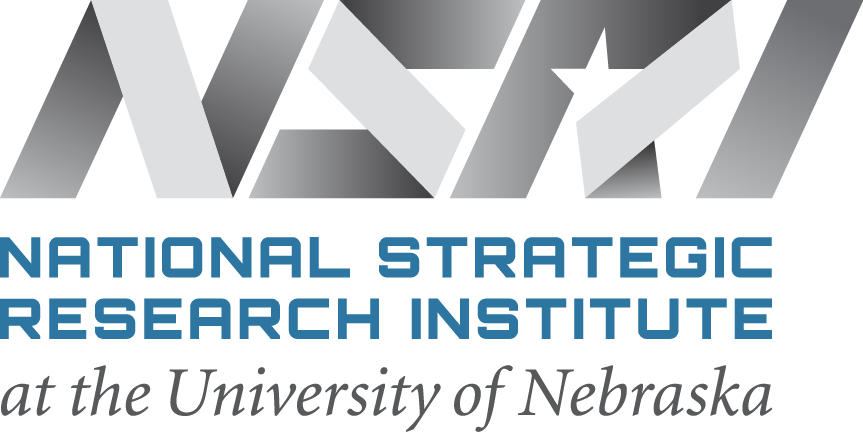
It’s not surprising that Dr. Rebecca Oberley-Deegan became a scientist.
As an Iowa schoolgirl, she sometimes would go to work with her father, a free radical biologist.
“He would talk to me about his work, and it always interested me,” she said.
An uncle was a scientist, and her brother and a cousin are also scientists.
But there’s more to the story of how she became a respected researcher and expert in free radical compounds in her own right.
Dr. Deegan’s father suffered from kidney disease and required dialysis to stay alive. That exposure to what she calls “the marvels of medicine” had a big impact on her.“It amazed me,” she said. “Seeing how science can help people have a good life was important to me.”
When her dad passed away, Dr. Deegan was working as a postdoctoral fellow and helping finish a stem cell project that her father had been working on with a colleague. Much of the work she does now at the University of Nebraska Medical Center (UNMC), as an associate professor of biochemistry and molecular biology, is related to a drug that mimics a protein her dad worked with.
“It is so rewarding to be kind of continuing his work,” Dr. Deegan said. “I think he would be amazed at how far things have come.”
Today, most of Dr. Deegan’s UNMC research is related to developing drugs that protect cancer patients from radiation. Due to this expertise, she was invited to join an interdisciplinary team researching new radiation drugs for warfighters, part of the Nebraska Drug Discovery and Development Pipeline (ND3P), a network of experts, facilities and technologies stimulated by the National Strategic Research Institute (NSRI) at the University of Nebraska for the U.S. Department of Defense (DOD).
Dr. Ken Bayles, an ND3P founder and NU associate vice chancellor for research, said Dr. Deegan is the only researcher in the University of Nebraska system with the expertise needed to test efficacy of anti-radiation drugs against Acute Radiation Syndrome (ARS).
“She received training in ARS and has years of experience,” he said. “She is an excellent scientist who has a keen eye for detail. Her methodical and meticulous experimental approach is exactly what is needed for drug development."
Although the military and medical fields are very different, the DOD project is closely related to Dr. Deegan’s cancer research.
“It’s not a far stretch,” she said. “In the lab, I was looking for markers for targeted low-dose radiation damage in cancer patients. The mechanism and cell changes are the same with whole-body radiation.”
The new DOD research is highly focused on prevention of radiation damage, whereas past research has covered treatment after exposure.
“We are trying to identify new targets we haven’t thought of before,” Dr. Deegan said.
People can be exposed to radiation in many ways. In addition to cancer and weapons, radioactive powerplant spills must be cleaned up, for example. Astronauts need protection from space radiation. Even x-ray technicians are at risk.
“I’ve known radiologists who wore lead aprons,” Dr. Deegan explained, “but the aprons only went down to their thighs, and they developed sarcoma in their legs.”
Radiation side effects can be painful and life changing.
“People always have stories about cancer treatment’s profound side effects,” she said. “But drug companies are focused on trying to find a cure. The mentality is that [side effects are] the price you pay for killing cancer. We can’t eliminate them completely, but we CAN make it better.”
Part of the problem is that radiation mitigation drugs are not profitable, even though they likely will be widely used. It’s the same with other drugs that cost a lot to develop but don’t net high profits.
ND3P solved this problem by assembling a team of government, military, private and academic drug development experts, including laboratories, clinicians and researchers in scientific disciplines such as biology, chemistry and radiation. Some partners provide funding. Others contribute time, personnel and existing resources.
“This collaboration changed the way I think of my work,” Dr. Deegan said. “I’ve learned a lot by being on team calls and thinking more deeply about how we can improve drugs in the pipeline and help devise different end points to better identify what a good drug is and is not. I like the creative aspects of pairing all the expertise together.”
Dr. Deegan said NSRI is critical to the group’s success.
“It’s easy to meander down different paths and not target the actual goal,” she said. “Working toward an NSRI goal keeps us focused.”
A key benefit of working with NSRI, she said, is the institute’s ability to connect researchers with the U.S. Strategic Command (STRATCOM) near Omaha, Neb., and other DOD customers. STRATCOM sponsors NSRI in the institute’s role as one of just a handful of DOD-designated University Affiliated Research Centers (UARCs) across the nation.
With NSRI, Dr. Deegan explained, researchers benefit from direct interaction with the military, and STRATCOM and the DOD benefit from direct access to research facilities. The arrangement seems to be working well, she said.
Her other work is also advancing as well, adding to the knowledge and experience she brings to the team. A National Institutes of Health (NIH) project she is working on reached Phase 1 trials at the time of this writing, which means it is being tested in humans (11 of them).
“It is gratifying to have the first patients actually get this drug for the first time,” Dr. Deegan said.
But she warned that there is more work to be done to determine if the drug is efficacious.
Not to worry. The team is ready to take it on, and Dr. Deegan knows her dad would be proud.
###

